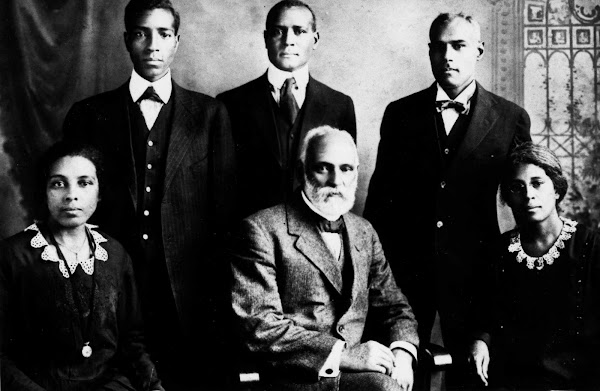My great-uncle, Edwin Augustus Harleston (1882-1931), was the most notable African-American portrait painter of his day. His wife, Elise Forrest Harleston (1891-1970), was one of the nation's first black women photographers.
They owned an art and photography studio in their hometown, Charleston, South Carolina, in the 1920s. To make ends meet, they also worked in the thriving funeral business established by Edwin's father, who had been born a slave.
In addition to being an artist, Edwin Harleston was the founding president of the Charleston branch of the NAACP and was actively involved in the National Negro Business League, the Atlanta University alumni association and other organizations.
In the early 1900s, few black Charlestonians could afford to have their portraits painted, so Teddy Harleston was always on the road either seeking commissions or fulfilling them. Consequently, from 1913 until shortly before his death in 1931, he and Elise wrote hundreds of letters to each other.
Edwin and Elise Harleston had no children of their own, but they reared two nieces. One of them was my mother, Gussie.
I knew Elise as "Tantie" and Edwin as "Uncle Teddy," the nicknames Mama and other family members used. Although Uncle Teddy died long before I was born, I was fortunate to know Tantie in the twilight of her life, after she had been widowed for the second time and was living alone in Los Angeles.
As a child, I lived in her home for nearly a year, but I had no idea she had been a photographer, that she was married to an artist, or that they knew people like scholar and activist W.E.B. DuBois, tenor Roland Hayes, educator Mary McLeod Bethune, scientist George Washington Carver, artist Aaron Douglas and many other famous African Americans.
In the decade that I knew her, Tantie never talked about her first husband and their life together, but she kept his letters long after his death. I am publishing them here along with photographs and paintings, diary entries, correspondence from family and friends, and personal commentary. I hope readers will learn something about this couple, my most illustrious ancestors, and about this segment of black American society one generation after slavery.
Meet Theo Lockrow: 2025 Vibrant Leader Intern
5 months ago







2 comments:
Hi Mae,
I love this project because you are preserving rare history. Few people know much about the lives of "educated"/"middle class" African-Americans around the turn of the century.
And these were creative folks, too! (Now we know where you got it!)
Talk to you soon!
hello.. we are related.
Post a Comment